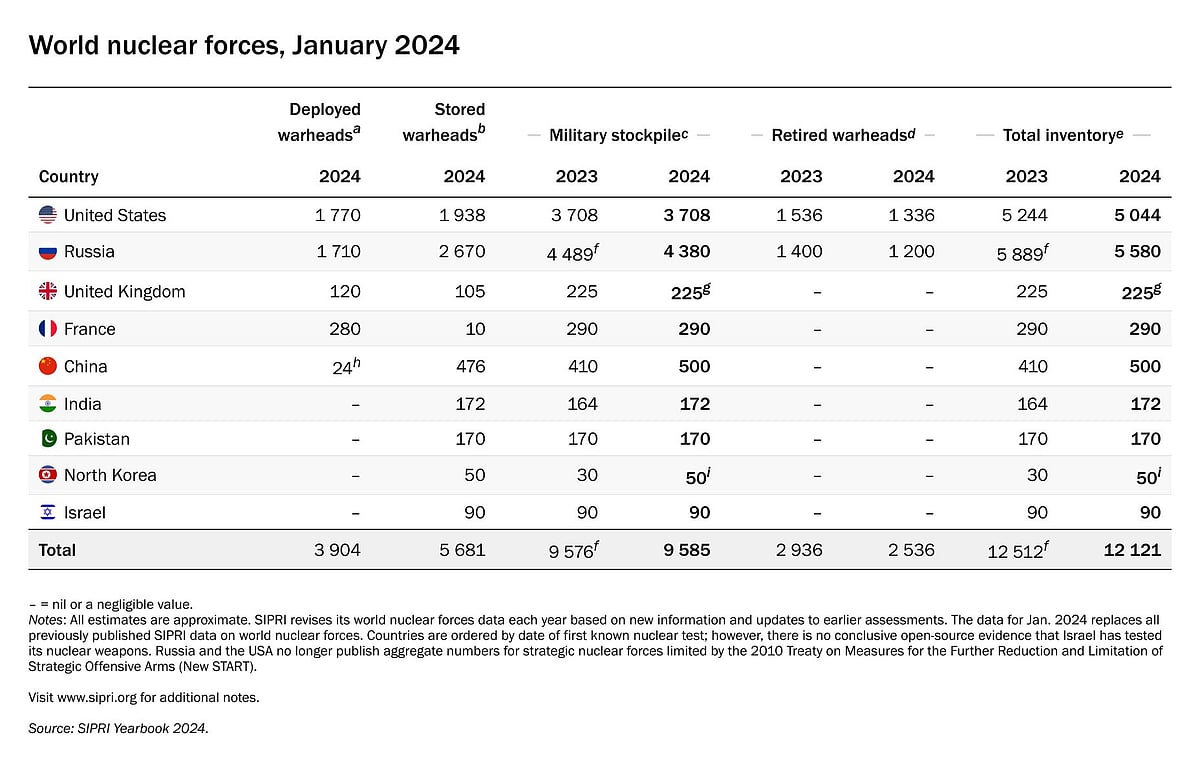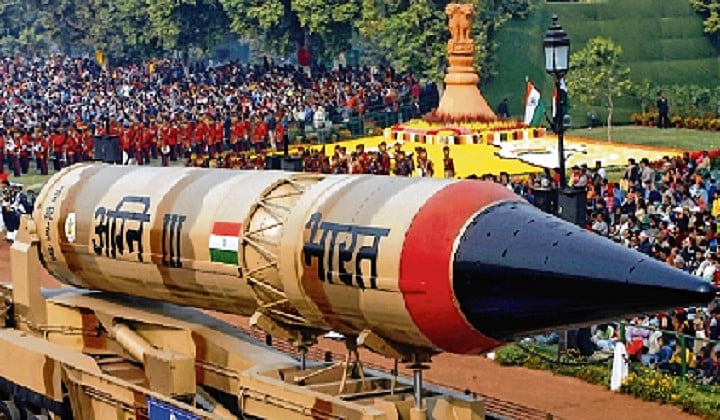India now has more nuclear weapons than Pakistan does for the first time in 25 years, with an estimated 172 warheads to Pakistan's 170, according to the most recent report from the arms tracker Stockholm International Peace Research Institute (SIPRI).
The report also notes that China recently increased the readiness of its nuclear weapons, putting warheads on high operational alert and combining them with long-range missiles for possible quick strikes. This is a major shift in China's nuclear policy.
What Is SIPRI Report?
On July 1, 1966, the Swedish Parliament decided to establish the Institute with the legal standing of a separate foundation to 'understand the preconditions for a stable peace and for peaceful solutions of international conflicts.' Since then, SIPRI has established its credibility and standing by demonstrating expertise, professionalism, and the gathering of accurate and factual data. The institute claims that it has done this by providing accessible, unbiased information on weapon developments, arms production and transfers, military spending, and arms reductions, limitations, and disarmament.
The Institute's mission is to carry out scientific research on cooperation and conflict issues crucial to global peace and security in order to advance knowledge of the prerequisites for both a stable peace and a peaceful resolution of international disputes.
What Does The Report State?
According to the SIPRI report, Russia, France, the UK, the USA, and—more recently—China already possess the ability to deploy multiple warheads on ballistic missiles, a capability that North Korea, India, and Pakistan are all pursuing. This would allow nuclear-armed nations to threaten the destruction of a great deal more targets and allow for a quick potential increase in the number of warheads deployed.
China's nuclear arsenal is expected to keep growing, having increased from 410 warheads in January 2023 to 500 in January 2024, as per SIPRI's report analysis. Nonetheless, the report also stated that China is reportedly thought to have some warheads on high operational alert for the first time.
Estimated Weapon Stockpile
According to the report, almost all of the 2,100 deployed warheads—nearly all of which belonged to the US or Russia—were kept on ballistic missiles in a state of high operational alert.
According to the report, military stockpiles held about 9,585 of the estimated 12,121 warheads in the world in January 2024, ready for potential deployment. Of those warheads, an estimated 3,904 were used with aircraft and missiles, which is 60 more than in January 2023. The remaining warheads were kept in central storage.
"Around 2,100 of the deployed warheads were kept in a state of high operational alert on ballistic missiles. Nearly all of these warheads belonged to Russia or the US, but for the first time China is believed to have some warheads on high operational alert," the report said.
Other Countries Report
The think tank claims that while Russia, France, the UK, the US, and more recently China have already been able to deploy multiple warheads on ballistic missiles, North Korea, India, and Pakistan are also pursuing this capability.
According to it, this would make it possible for nuclear-armed nations to threaten the destruction of a great deal more targets and to quickly expand the number of warheads that are currently in use.
Russia and the US together are believed to hold nearly 90% of all nuclear weapons, according to SIPRI.

SIPRI Report 2024 | sipri.org
In 2023, the amounts in each of their military stockpiles appear to have stayed largely unchanged. Nonetheless, it stated that compared to January 2023, Russia is estimated to have deployed about 36 more warheads with operational forces.
After Russia's full-scale invasion of Ukraine in February 2022, both countries have seen a decline in nuclear force transparency, and discussions about nuclear-sharing agreements have become more important, it continued.
It stated that India increased the size of its nuclear arsenal by a small amount in 2023 and that Pakistan and India both kept working on developing new nuclear delivery systems during that year.
On The Nuclear Report, the US and China
"While Pakistan remains the main focus of India's nuclear deterrent, India appears to be placing growing emphasis on longer-range weapons, including those capable of reaching targets throughout China," the report said.
It stated that by the turn of the decade, China might possess at least as many intercontinental ballistic missiles (ICBMs) as the US or Russia, depending on how it chooses to organize its armed forces.
However, the report also stated that China is still expected to have a much smaller nuclear warhead stockpile than either the US or Russia.
"China is expanding its nuclear arsenal faster than any other country. But in nearly all of the nuclear-armed states there are either plans or a significant push to increase nuclear forces," Hans M Kristensen, Associate Senior Fellow with SIPRI's Weapons of Mass Destruction Programme and Director of the Nuclear Information Project at the Federation of American Scientists (FAS). said, according to a report by PTI.
Notable Points From The SIPRI Report
Nine countries possessing nuclear weapons—the United States, Russia, the United Kingdom, France, China, India, Pakistan, North Korea, and Israel—kept up the nuclear arsenal modernization process, with multiple of them deploying new nuclear-capable weapon systems in 2023.
In January of this year, India had 172 "stored" nuclear warheads, compared to 170 for Pakistan.
In 2023, India made a minor addition to its nuclear arsenal, and Pakistan also kept working on developing new nuclear delivery systems.
While Pakistan continues to be the primary target of India's nuclear deterrent, the SIPRI report stated that India seems to be increasingly focusing on longer-range weapons, such as those that can reach targets all over China.
Almost all of the 2,100 deployed warheads—nearly all of which belonged to the US or Russia—were kept on ballistic missiles in a state of high operational alert. Nonetheless, it is thought that China has placed some warheads on high operational alert for the first time.
Combined, the US and Russia own nearly 90% of the world's nuclear weapons.
According to the watchdog, Russia is estimated to have added about 36 warheads with operational forces since January 2023.
China's nuclear warhead stockpile is predicted to remain significantly smaller than either Russia's or the US's, according to the report.



.jpeg)







